We DO NEED another hero! RAAL Requisite CA-1a, with McIntosh MHA200
We, music lovers, are believers. We never stop looking for the next “hero.” The kind of equipment that takes us to musical nirvana. That breaks the notions of musical reproduction we had until then.
Do you remember a Tina Turner song from the Mad Max soundtrack, the one with the Australian plains, V8 engines, and Mel Gibson before he became a global mega-star? It’s called “We Don’t Need Another Hero.”
The fetish for the apocalypse has been a constant in cinema, and it’s no coincidence. Secretly, or more or less openly, many feel a fascination for these scenarios.

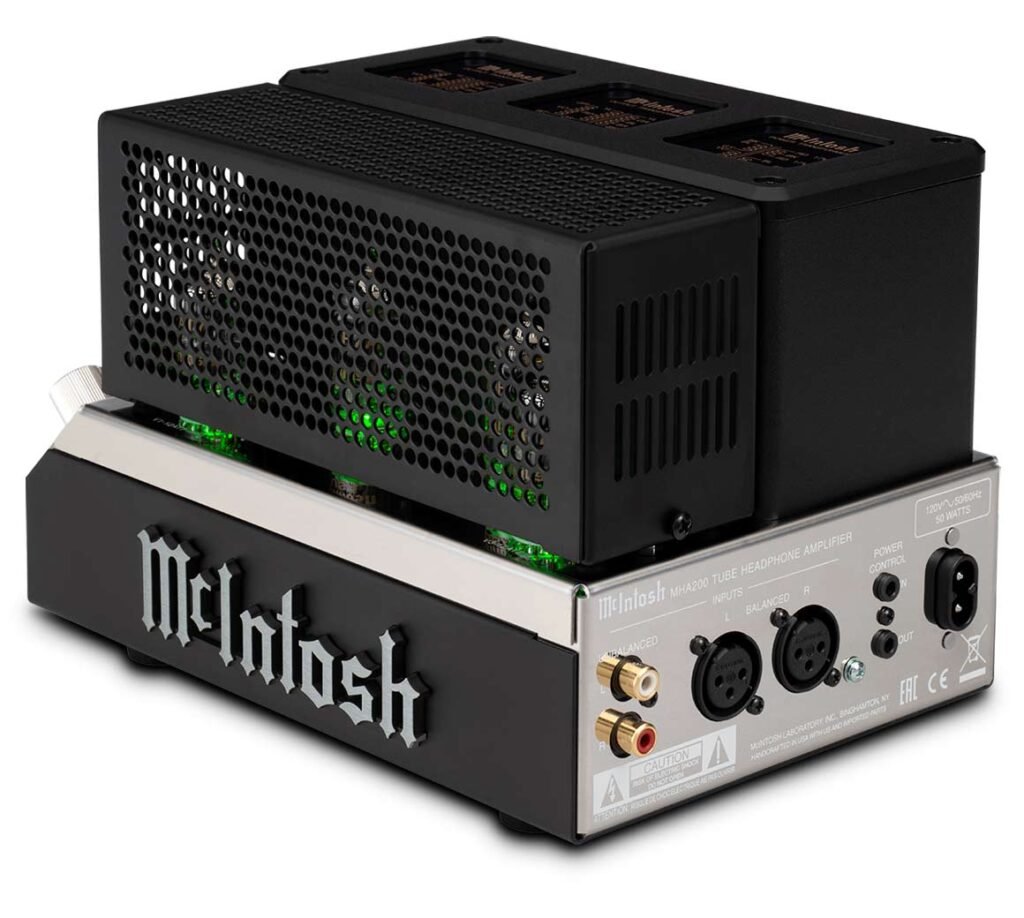
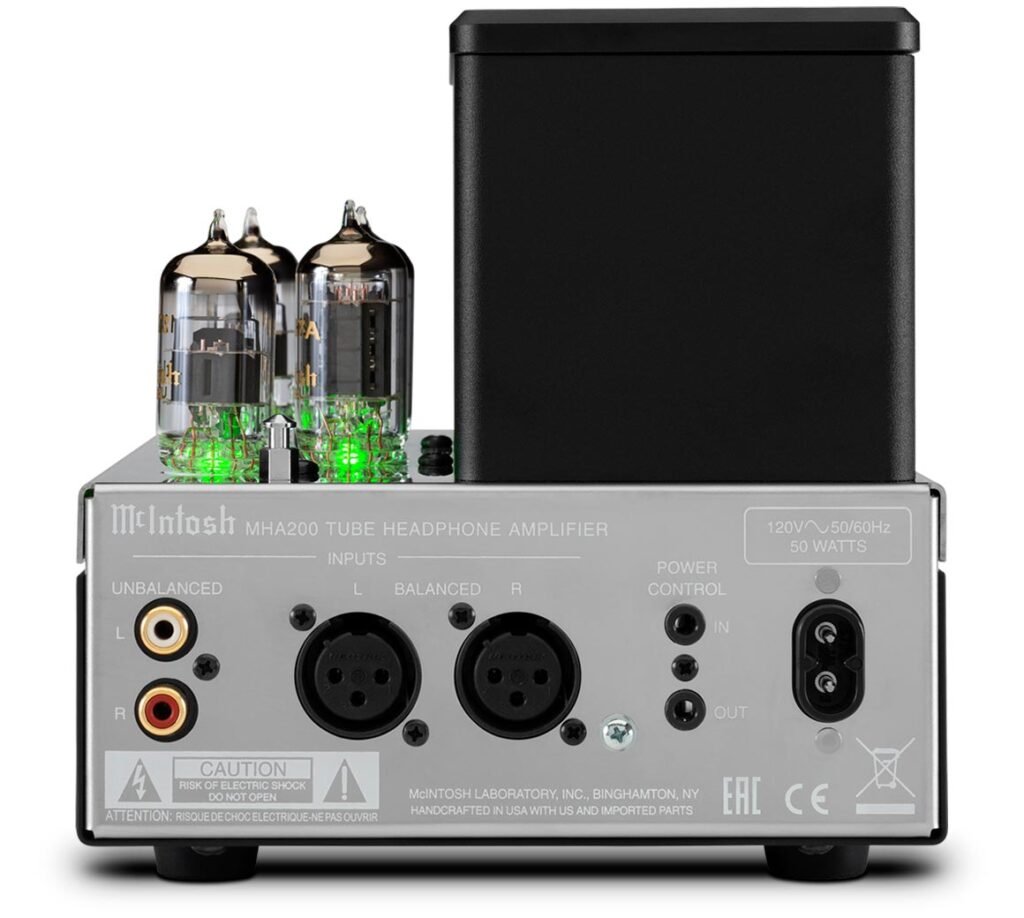
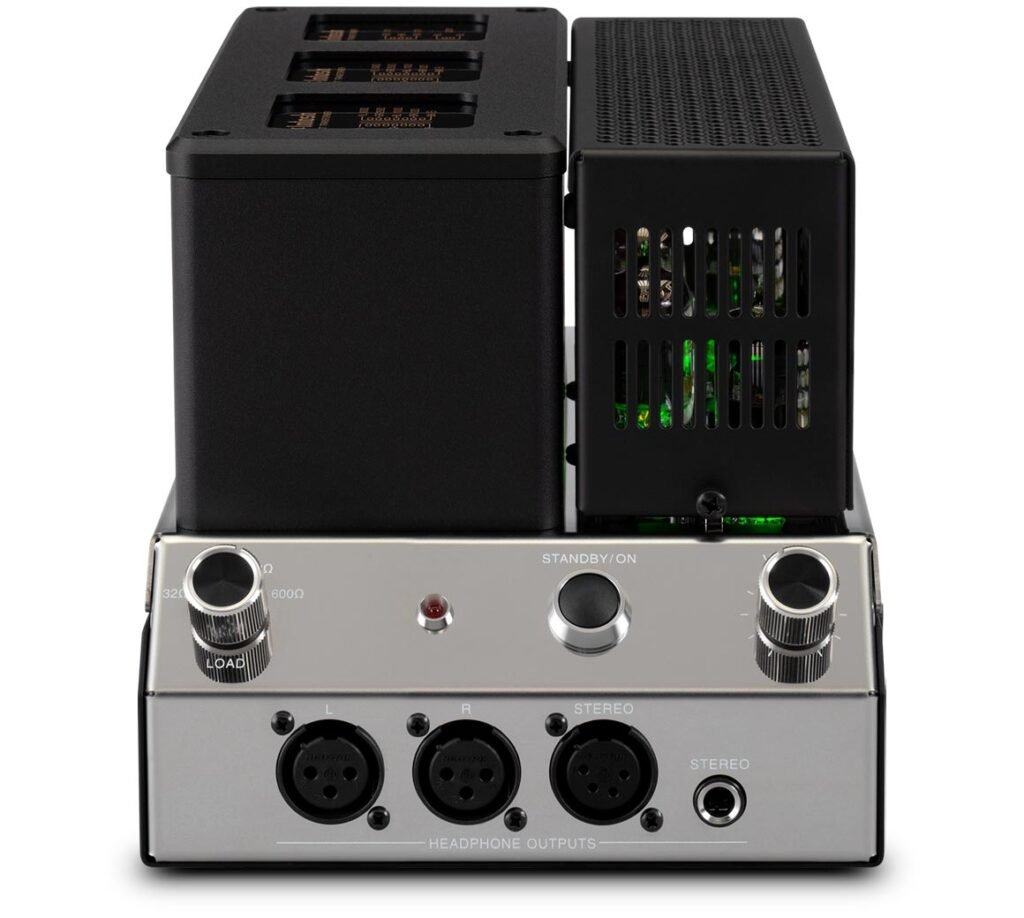
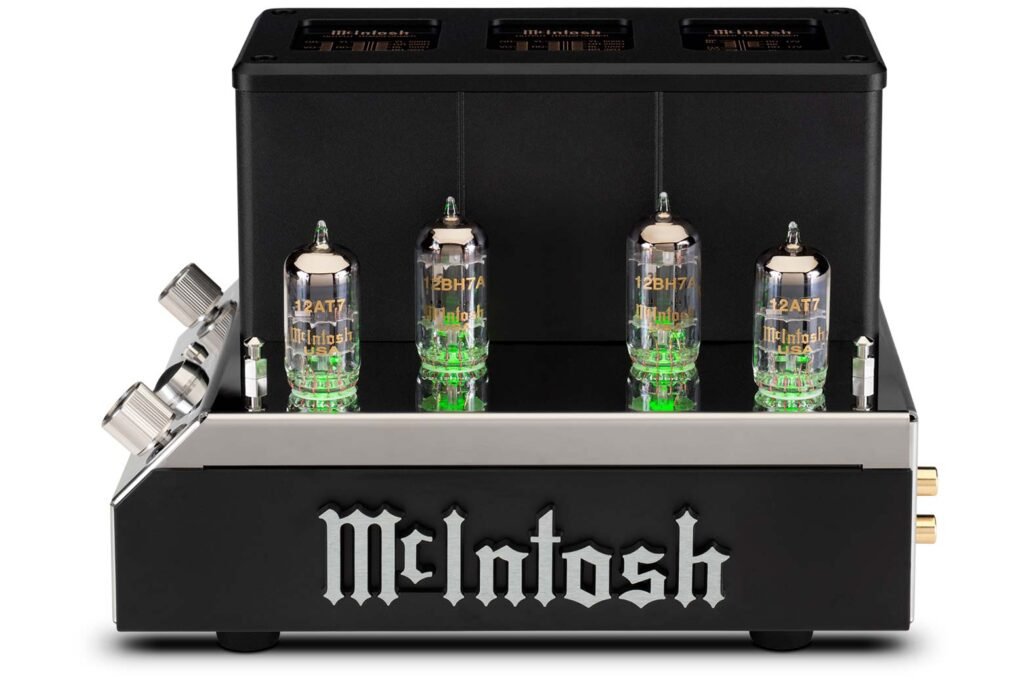
The design of McIntosh’s MHA200 headphone amplifier fits perfectly into such a scenario. On the front, at the bottom, are the XLR jacks, left, right, or stereo channels, and jack for more conventional headphones. Just above, on the beveled front, to the left, the headphone impedance selection button, the Stand-by or On indicator LED, and the power button in the center, and to the right, the very (very) delicate volume knob. On top, in the traditional McIntosh configuration, on the left side, is the case housing the transformers, which are the main reason for the 5 kg of this small heavyweight, and to the right, the 4 tubes with McIntosh’s traditional green lights. This amplifier comes with a protective cage for the tubes. On the right side, the traditional “McIntosh” logo. At the back, besides the two pairs of jacks, one balanced and one single-ended, there’s the power cable socket.



The RAAL Requisite CA-1a ribbon headphones could very well have been used by a Sherman or Panzer pilot in World War II. The materials these CA-1a are made of exude durability, but the finish likes to appear rudimentary. Not because the folks at RAAL couldn’t do better, but because they wanted it that way. It’s a statement. In fact, the entire experience provided by these headphones, from opening the military-style waterproof case to the finishes and industrial design, to the sound they deliver, tries to deliver a visceral, pure, unfiltered experience. And they succeed. If it’s beautiful, they deliver the beauty in all its splendor. If it’s ugly, they throw the ugliness without fear or pity for the consequences!
The CA-1a came with an external brick shaped toroidal impedance transformer to feed the extreme appetite of these CA-1a for electric current.
These RAALs may be hungry, but they deliver. They deliver your music energetically!
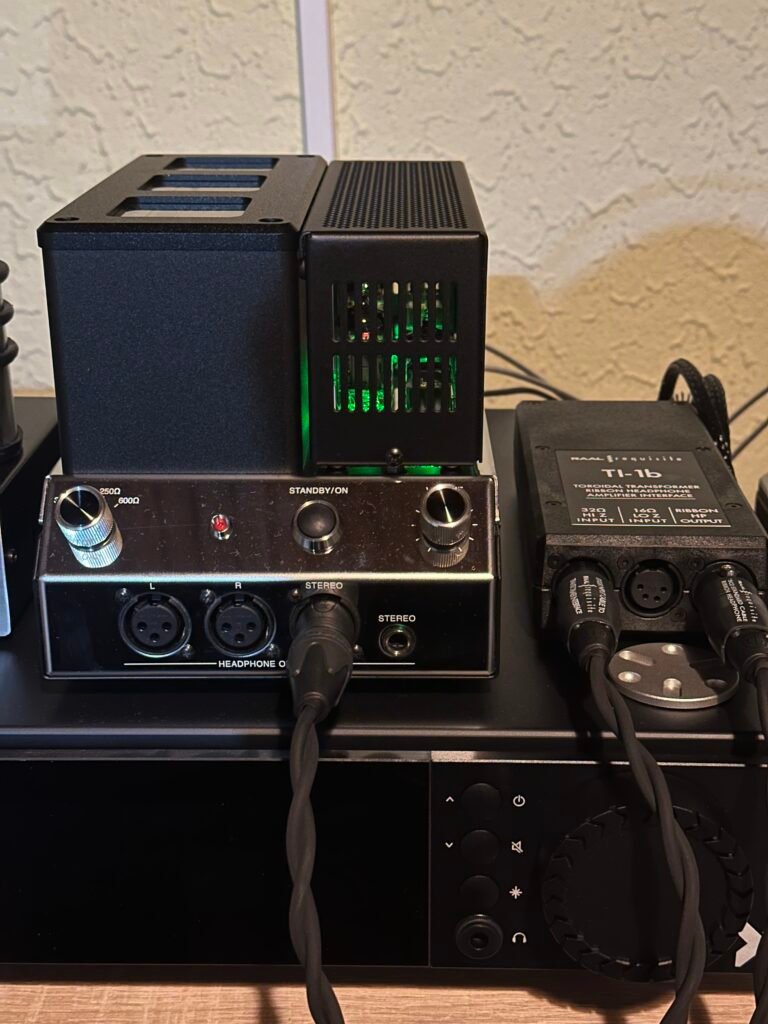
Settling into a space, small or large, and enjoying the music with these headphones is like opening the compendium of audiophile adjectives and starting to distribute them. But above all, trying to contain the energy that travels through the body, and not forget that we are tethered to a cable, to avoid pulling the equipment along with us in a poorly calculated move.
I had my doubts if I would be able to return the set unbroken. i. e. listening to rock, “Today” by Smashing Pumpkins with the RAAL and such a short cable is a serious risk to the structural integrity of the transformer and the accompanying headphone amplifier.
Let’s get this out of the way: these RAAL Requisites is one of the best headphones I’ve ever tried!
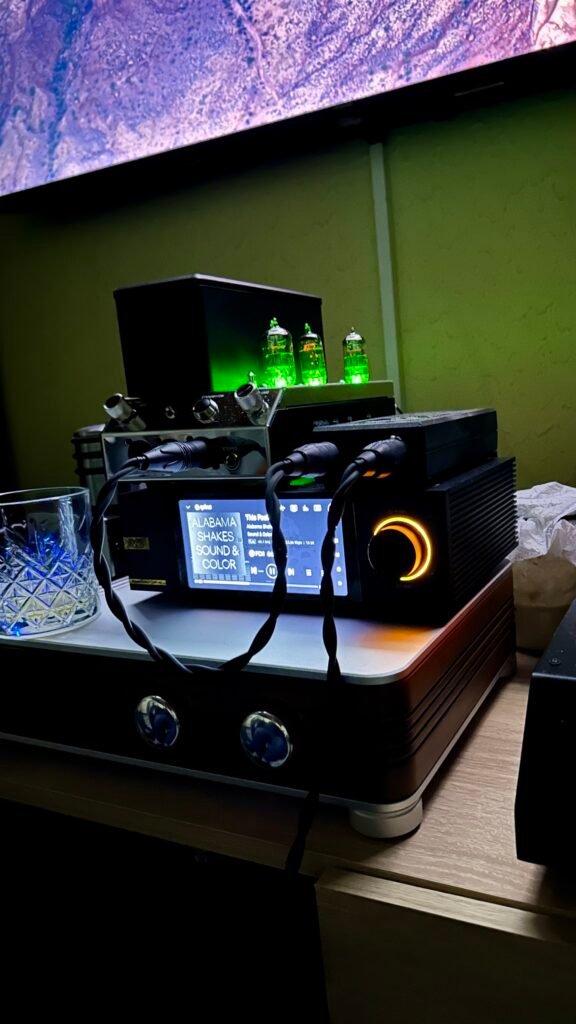
Back to Mad Max… these RAALs demand Duran Duran! “Wild Boys.” The 80s. The attack! If I say the sound of these headphones has chest hair, you understand, don’t you? I knew you would!
Sure, a little over a year ago the Meze Elite, also from the High-end league, were here for review. I appreciated them too. Comparing the two based on memory of what I heard 12 months ago, would be at least dishonest on my side. But, considering that I don’t remember them creating such a reaction, and right from the first moment, I dare say that these RAALs are serious contenders for surprise of the year. Sure too! The headphone amplifier sent to test these very special headphones is also not to be dismissed, quite the opposite. This set doesn’t promise; it delivers.
What have I been listening to?
The guitar strings accompanying Rosalia in “Que se Muere Que se Muere” seem to crackle, such is the speed of the attack of each note.
“All in Good Time” live, Dead Can Dance, is reproduced as this band always deserves to be heard, with scale, with the sound the size of an orchestra, and with the reverb faithful to the live space where the performance took place. That’s the feeling it conveyed.
Each instrument of the Boston Symphony Orchestra is given the right to shine in Shostakovich’s 4th Symphony such is the separation and detail. With scale and grandeur, or immediately afterwards, delicate sonic filigree, without blinking.

Moses Sumney’s voice in “To Believe,” Cinematic Orchestra, is delicious and contrasts somewhat with the bass notes of the keyboard. The floor didn’t shake, only because they’re headphones, but the jaws tightened in the crescendo of the final string section.
The bass is something else! Power, texture, fast and with a huge scale. Listen to Tom Jones’ “24 Hours.” I wasn’t expecting it, given the technology used.
Yes, the big impact of these CA-1a was the bass, as I had never heard in headphones, an absolute surprise given the technology used. Then came the attack, dynamics, and almost overwhelming scale. The detail, the fine sonic textures, and the wide and deep soundstage as I didn’t think possible in headphones, and the organic way it reproduced the voices. Listen to the delicious and emotional (as always in this performer) voice of Antony Hegarty in “In This Shirt” (Royksopp remix), by The Irrepressibles.
Another great challenge met, “Soyeusement” by Michel Godard. The music was recorded, with a huge reverb, original from the hall. Reproducing it is complicated in a system led by speakers, but it becomes even more difficult to achieve this depth with headphones. Challenge overcome, and with distinction.
All this audiophile jargon is very nice and interesting. There are plenty of equipment out there that are also compendiums of adjectives, but in some, the cement that binds these qualities seems to be missing, which is of little or no use. That’s not what I heard here. Here, I heard music that moved me inside. That made me move outside (carefully, because the cable was short and I wanted to return this completely intact).
Music must mark us on the skin; otherwise, it’s not worth it. These RAAL Requisites moved me, and I’ll do the Pepsi Challenge with anyone, ensuring they will not leave anyone indifferent.
Flaws or quirks (nothing is perfect)

I didn’t mind, but there might be those who think that headphones that need to be connected to an energizer, in turn connected to an amplifier, which in turn needs a source, might be too much arsenal. However, the price asked for these headphones, right from the start, will only attract enthusiasts determined to appreciate music in this way, and who can afford it: €2400 for the CA-1a, and if you choose the MHA200, another €4200.
The MHA200 could have a volume knob that offered a bit more resistance. For those unfamiliar, the first time they might “slip” and blow their eardrums. Another thing I don’t appreciate is the polished metal front plate, which will inevitably get fingerprints.
I consider all this more than surpassable for those who want the right to enjoy their music with this set at home. What do I advise? Request a listening session. For those who do, be warned, money will slip out of the bank account, as you won’t be able to resist the urge to own them.
Summing up, we come to the question: do we need a new hero?
Yes, we do. We need heroes like this. Even if they are electronic devices. Because we need music. Music played like this.
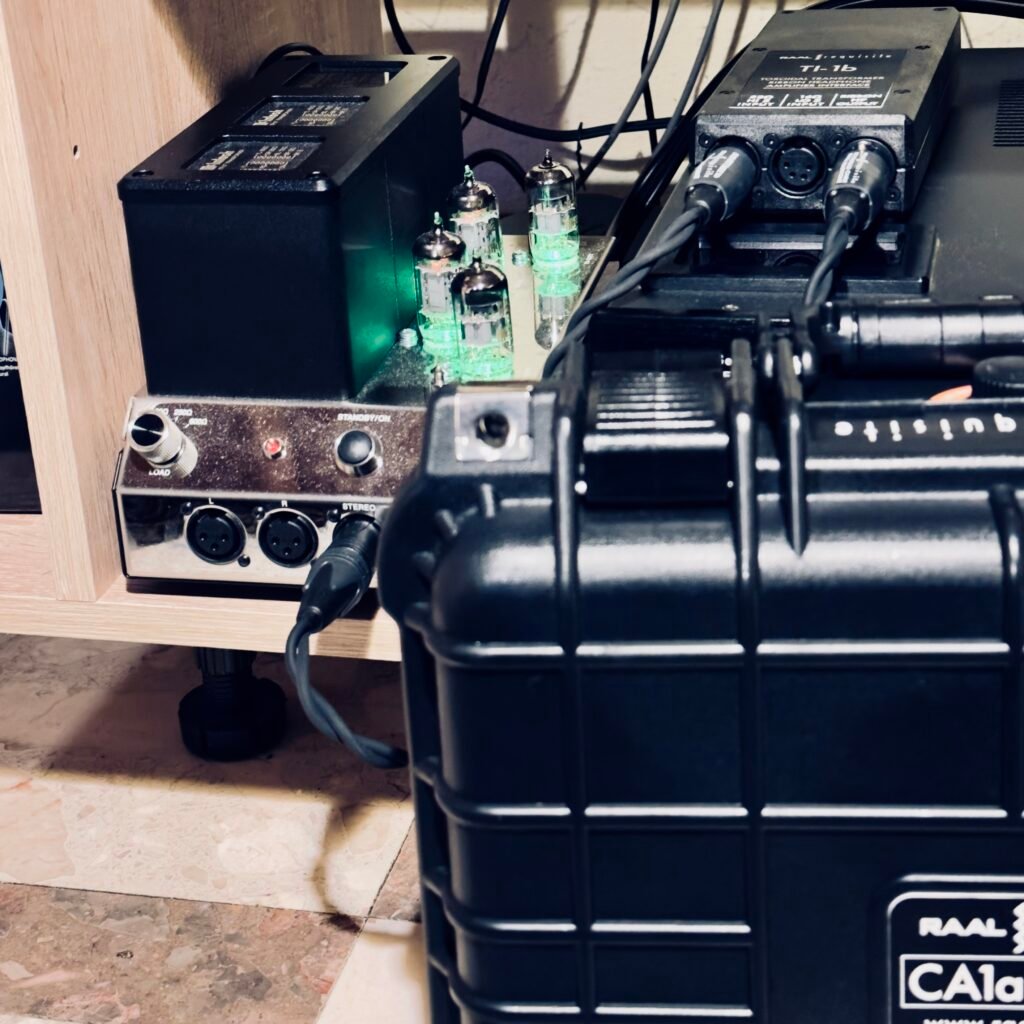
Equipment used in this review
- RAAL Requisite CA-1a, true ribbon headphones
- McIntosh MHA200, valve headphone amplifier
- MoFi StudioDeck, turntable
- Rothwell Simplex, phono stage
- Eversolo DMP-A6 Master Edition, streamer
- Denon DNP-2000NE, streamer
- cables & power distributor: Ansuz
